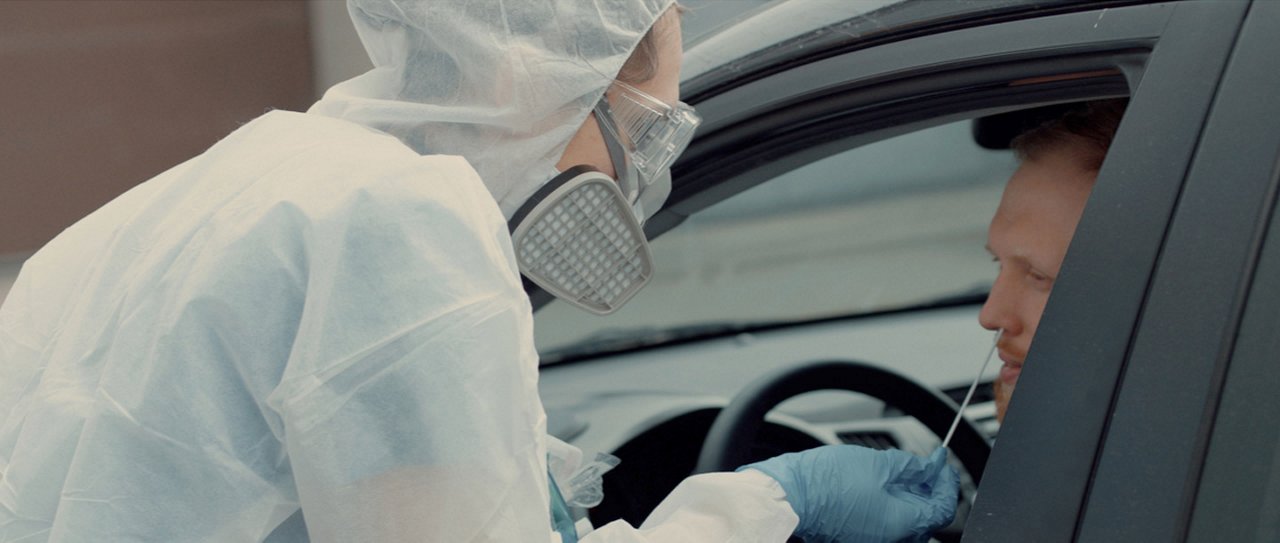A timeline of COVID-19 symptoms

From initial symptoms to recovery, find out how COVID-19 symptoms progress
You’ve been careful. You’ve stayed socially distant. You’ve worn a mask. You’ve washed your hands often. But others weren’t as careful. And when you went to grab takeout last week, you bumped shoulders with someone who had COVID-19. Little did you know, they had just coughed, and you are now infected.
You may not start feeling symptoms immediately, but when you do, what can you expect?
The big 12 COVID-19 symptoms
According to the Centers for Disease Control and Prevention (CDC), there are 12 common symptoms of COVID.
With so many symptoms, it can be hard to tell if you have a common cold or COVID-19. Some symptoms overlap, which adds to the confusion. But as more people get infected, researchers and medical professionals are getting better at tracking what the COVID-19 symptom progression looks like.
This information can help you pinpoint if your symptoms indicate something minor or something more serious like COVID-19. While there is still uncertainty, and things change daily, here is what the CDC knows about symptoms.
Keep in mind symptoms can vary from person to person. As many as 8% of people may show no symptoms at all. Symptoms also very in severity due to underlying health conditions.
Pre-symptoms
Many people with COVID-19 will go two to 14 days with minimal or no symptoms. Most will begin feeling symptoms between days four and five after exposure.
Day one of symptoms
Symptoms typically begin mild. They usually include a fever – any temperature 100.4 F or greater – dry cough, or shortness of breath. Fever, cough and loss of smell or taste are the most common symptoms.
Days two through 10 of symptoms
Symptoms continue to increase in severity. The CDC says you may experience new symptoms, like:
- Fever
- Chills
- Cough
- Shortness of breath or difficulty breathing
- Fatigue
- Muscle or body aches
- Headache
- New loss of taste or smell
- Sore throat
- Congestion or runny nose
- Nausea or vomiting
- Diarrhea
Days 10 through 12 of symptoms
If someone has a severe case of COVID-19, this is typically when they are admitted to the ICU due to acute respiratory distress syndrome (ARDS), extreme difficulty breathing requiring a ventilator.
The CDC does note that an ARDS diagnosis typically happens between days 8 and twelve. But sometimes it occurs as late as 15 days after beginning of any symptoms. Onset of difficulty breathing may be sudden.
Days 10 through 14 of symptoms
If someone has a mild case of COVID-19, this is typically when they begin to feel better. Symptoms will start to subside. Any cough will last an average of 19 days.
Doctors recommend that people get re-tested to make sure they no longer test positive for the disease. This is typically done no sooner than 14 days after diagnosis. Follow the directions of your provider, contact tracer or other public health provider.
Prolonged recovery and other complications
While most symptoms will disappear on their own, some people have reported specific symptoms lingering. These include fever, loss of taste or smell, fatigue and a prolonged cough.
COVID-19 can damage the heart and kidneys. Bacterial infection is one possible complication. These complications may occur as late as three weeks after onset of the initial illness. Researchers are still trying to identify why some people experience symptoms for longer than other.
Initial research about prolonged loss of smell says that patients typically lose their sense of smell because of cleft syndrome. This is when the tissue around the part of your nose responsible for smell swells up. Typically, when the virus passes and swelling goes down, your sense of smell come back. But this hasn’t been the case for all. For those with severe COVID-19 cases, some have reported losing their sense of smell for months. Some may run the risk of losing it permanently due to the body attacking the nasal passage when fighting COVID-19.
Researchers will continue to study these cases. Scientists hope to have more concrete findings in the future.
We still have a lot to learn when it comes to COVID-19. Symptoms vary based on age and underlying health conditions, but those listed above are the most common.
If you are experiencing any of the above symptoms, call your doctor for advice. And make sure to isolate if you are sick.
For information on how to find health care, visit our COVID-19 resources page.
Browse related articles

Blue Cross and Blue Shield of North Carolina does not discriminate on the basis of race, color, national origin, sex, age or disability in its health programs and activities. Learn more about our non-discrimination policy and no-cost services available to you.
Information in other languages: Español 中文 Tiếng Việt 한국어 Français العَرَبِيَّة Hmoob ру́сский Tagalog ગુજરાતી ភាសាខ្មែរ Deutsch हिन्दी ລາວ 日本語
© 2024 Blue Cross and Blue Shield of North Carolina. ®, SM Marks of the Blue Cross and Blue Shield Association, an association of independent Blue Cross and Blue Shield plans. All other marks and names are property of their respective owners. Blue Cross and Blue Shield of North Carolina is an independent licensee of the Blue Cross and Blue Shield Association.



